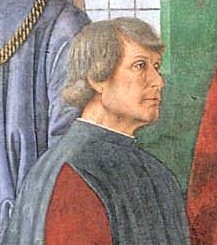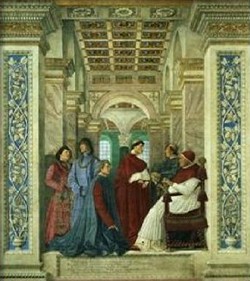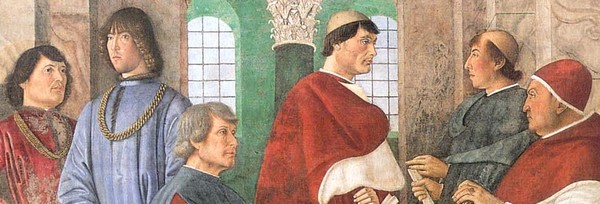Thierry Depaulis found these last year, published in a 1995 article by Arnold Esch: The entries from the Roman Customs Register refer to Trionfi cards being imported from Florence. Besides some notes about normal playing cards, Esch noted only a few sentences:
| "Also mentioned are trionfi, that is, printed or painted tarock cards: for example, a Florentine brings in 'quattro parra de trionfi et carte indorate e doi para de trionfi.' Another Florentine imports 'una cassetta de trionfi et carte da jocare,' with an estimated value of 6 duc 18 bol and '23 para triunfi' with a value of 7 duc 54 bol. In other cases 'para trionfi' are assessed at 7 1/2 bol, or 10 bol, or 23 1/2 bol. - differences in value are to be expected in goods of this sort." |
Source: Arnold Esch: Roman Customs Registers 1470-80: Items of interests to historians of and material culture in: Journal of the Warburg and Courtald Institutes, Vol. 58, 1995, pp. 72-87 ( Article at ISTOR)
The article used: Registers in Rome, Archivio de Stato, Camerale I, Camera Urbis. There are:
- "Dogana di terra" (or di Sant'Eustachio) about overland imports, reg. 52 - 55 and 42 (5 1/2 volumes from June 1474 - 1482, totally ca. 25.000 consignements)
- "Dogano di Ripa" about imports with ship, reg. 141 - 147 (6 volumes from October 1469 - May 1481, totally ca. 4000 ships)
The German version of the article has with 93 pages more content in relation to 16 pages for the English version:
Arnold ESCH, Importe in das Rom der Renaissance. Die Zollregister der Jahre 1470 bis 1480, in: Quellen und Forschungen aus italienischen Archiven und Bibliotheken (QFIAB) 74, 1994, S. 360-453 (perhaps it contains more material; not visited for the moment).
The entry of Platina in the year 1474 shows no entry about Trionfi cards, but it is of interest to know about it, when refering to Trionfi cards of Rome:
Honesta voluptatet valetudine (1474 or 1475); "On Right Pleasure and Good Health"), printed 1480 by Gerardus de Flandria 1480 and reknown as the first printed cooking book.
Platina recommends cards as a beneficial after-dinner game for gentlemen, to divert their minds and thereby improve digestion. He warns against cheating or desiring to gain anything. "Deep thinking after a hearty meal impedes digestion" "However, there is to be no cheating nor desire to gain, and any stakes are to be merely nominal, lest bad passions become excited and the process of healthy concoction be disturbed" (Kaplan).
The first half of the book discusses all kinds of food and spices, their nature, and their cultivation. The second half are filled mainly with 250 recipes from the cookbook of the writer Martino, who lived during the 1450-70 period. The book was translated into German, Italian and French, and frequently republished throughout Europe.
| The relevant passage: "Interim vero jocis et ludo, minima concito, vacandum, ne sensus cogitatione occupati concoctionem impediant. Careat jocus (quem urbanum, facetnm, modestum volo) dicacitate, scurrilitate, mordacitate. Nolo mimos; non proterviam; non dicteria; non convicia, unde ira et indignatio, et plerumque magna rixa oritur. Ludus sit talis, tessera, saccho (ut nostra appellatione utur), carthis variis imaginibus picti. Absit inter ludendum omnis fraus et avaritia, qua illiberalior et destestandus fit ludus, nee ullam affert ludenti voluptatem; cum timor, ira, et inimensa habendi cupiditas variis modis ludentes cruciet." |
Platina speaks of "carthis variis imaginibus picti", that means "cards with differently painted pictures", indicating, that the cards, that he knew, variated - as it seems, he indirectly includes Trionfi cards.
Platina had become in 1475 after an adventurous life as soldier, scholar, leading head in the Accademia Romana, author and prisoner of Pope Paul II. the librarian of the Papal Library. The event of his election to this function was celebrated with a picture, which became famous.
(autorbis / Ross Caldwell)

Bartolomeo Sacchi,
beter known as Platina


Southern development (first notes)
- 1450 Florence
- 1452 Siena
- 1452 Rimini
- 1460 ? Arcona
- 1473 Naples
- 1474 ? Rome
- 1476 Fabriano
- 1480 ? Recanati
